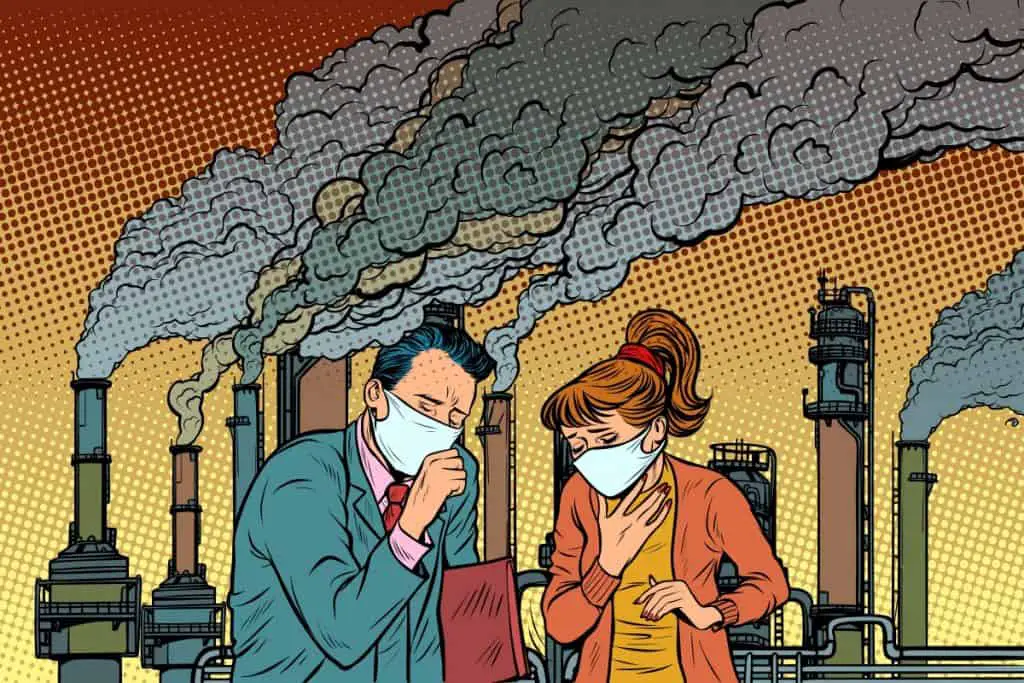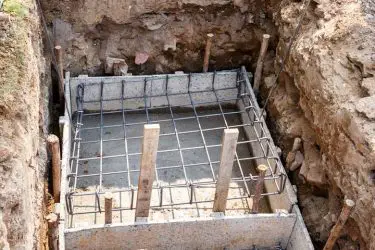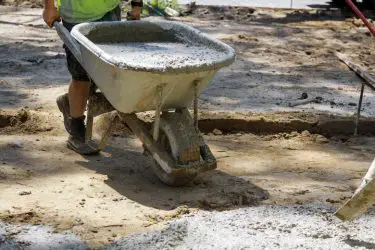Concrete is completely ubiquitous throughout the modern world, and for good reason. It’s strong, it lasts forever, and it’s cheap to mass-produce. However, many have raised concerns about the adverse effects concrete can have on the environment.
Concrete can be highly destructive to the environment. Not only does its production amount to about 7% of mankind’s CO2 output, but it also has a tendency to replace natural structures like floodplains or forests without adequately mimicking their essential functions.
The consequences of humanity’s mass production and use of concrete are actually quite complex and far-reaching. Every part of the process of making concrete has the potential to cause serious damage to the environment.

Table of Contents
Cement Production Involves Large CO2 Emissions
The first place where this becomes abundantly clear is at the very beginning of the process. The production of cement involves heating limestone to high temperatures, and one byproduct of this reaction is CO2.
A little bit of CO2 in the air is ultimately normal, but when released on such an enormous scale it can contribute significantly to global warming.
The sheer scale at which we produce cement means that cement alone before it’s even been made into concrete accounts for 5% of man-made CO2.
This process can also release other dangerous pollutants into the air, such as cadmium, thallium, and mercury. These toxic elements are obviously very bad for anyone exposed to them, but they can also damage the ecosystems nearby wherever the cement is being produced
We Source Too Much Sand From the Wrong Places
Sand is very common. How could it possibly damage the environment? Well, the sand itself is unlikely to contribute to the actual adverse effects of the concrete on the environment. Instead, it is the places from which we source sand that tend to suffer consequences.
Sand is a vital part of many important geographic features. Rivers and beaches in particular need their sand to prevent flooding and to keep ecosystems running.
Taking a little bit of sand out of a beach or river will ultimately be harmless. However, as with cement, the sheer scale at which we use sand for concrete can be devastating in some places.
It’s important to remember that sand is just too heavy to import or export profitably, so each geographical region will need to find its own sand source.
This means that in places that are developing rapidly (and using lots of concrete,) sand will often be mined from rivers, deltas, and beaches at unsustainably high rates.
Removing sand from rivers can shrink riverbanks and increase the amount of time the river spends flooded each year. This can destroy human property and make once fertile land barren.
Nowhere can this be seen better than along China’s Yellow River, where excessive sand mining has all but destroyed the stability of the river.

Mining from beaches may not have as dire human consequences, but it can deal serious damage to the habitats of certain animals. Turtles, for example, need sand in order to hide their vulnerable eggs, and without sandy beaches, they would certainly die out.
The real-world consequences for this can be extinction for some species, like the Indian Gharial, which needs sandbanks to make its nest and use to sun itself on. Because of rampant sand mining on Indian beaches, the Gharial is now nearly extinct.
Related Article: Are Concrete Blocks Really Toxic?
Concrete Dust Causes Air Pollution
Even while concrete is being mixed it can cause environmental damage. The mixing process tends to send toxic concrete powder up into the air. In some parts of the world where lots of concrete is mixed, this can become one of the most damaging air pollutants.
For instance, in New Delhi, so much concrete is produced with so little regulation that 10% of all air pollution is concrete dust.
Because concrete contains cement, it is a highly caustic substance. Caustic chemicals can be very dangerous when applied to the skin or inhaled. Of course, this can have horrifying long-term consequences for both people and animals.
Related article: Can Concrete Burn Your Skin? Here Are the Facts
Also, a big contributor to air pollution in areas like New Delhi is the demolition of concrete buildings. Building demolition and natural disasters that cause concrete buildings to collapse also make the air filled with concrete dust.
Concrete Is Replacing Important Soil
You may think that once the concrete is poured and dry the trouble is over, but this is anything but true. In most circumstances, concrete is replacing something like soil. Soil is important to local ecosystems for more reasons than you might think.
Not only does soil act as an important resource for growing plants and animals, but it also absorbs water during periods of heavy rainfall. Concrete can’t absorb water, meaning that when it rains on concrete water tends to flow from place to place, running across human pollutants such as gasoline or oil.
When this eventually gets deposited in the earth or in rivers lakes or oceans, the affected areas can quickly lose their ability to support life.
Even without the pollutants, the running water can cause soil erosion, which also decreases the soil’s potency.
Related article: Can Concrete Be Recycled?
Concrete Can Cause Issues Due to Radioactivity
Although concrete doesn’t always contain radioactive materials, sometimes it does. For most people, this will be manageable amounts of radiation that are unlikely to have serious consequences over time.
However, sometimes, by accident, this isn’t the case. Radioactivity can hurt both people and nature in irreparable ways

The Hidden Pros Of Concrete
Despite all of this, there are a few ways that concrete actually helps the world’s ecosystem. While the scale at which we are using concrete is damaging and unsustainable, that doesn’t mean that it doesn’t have a place in the world.
The incredibly long amount of time that concrete can last makes it an extremely useful replacement for wood. Wood can decompose or sustain damage from pests, and when it’s been destroyed it often amounts to a complete waste.
Concrete, on the other hand, can last almost forever when correctly maintained. This means that it doesn’t need to be replaced very often, ultimately leading to using fewer resources than if other building materials were used.
Read more: The Advantages and Disadvantages of Using Concrete
This being said, it doesn’t really matter how much material we’re saving in the long run when the world-wide concrete industry is pouring enough concrete to fill an entire concert hall every couple of seconds. It’s safe to say that the situation with concrete is quite dire.


